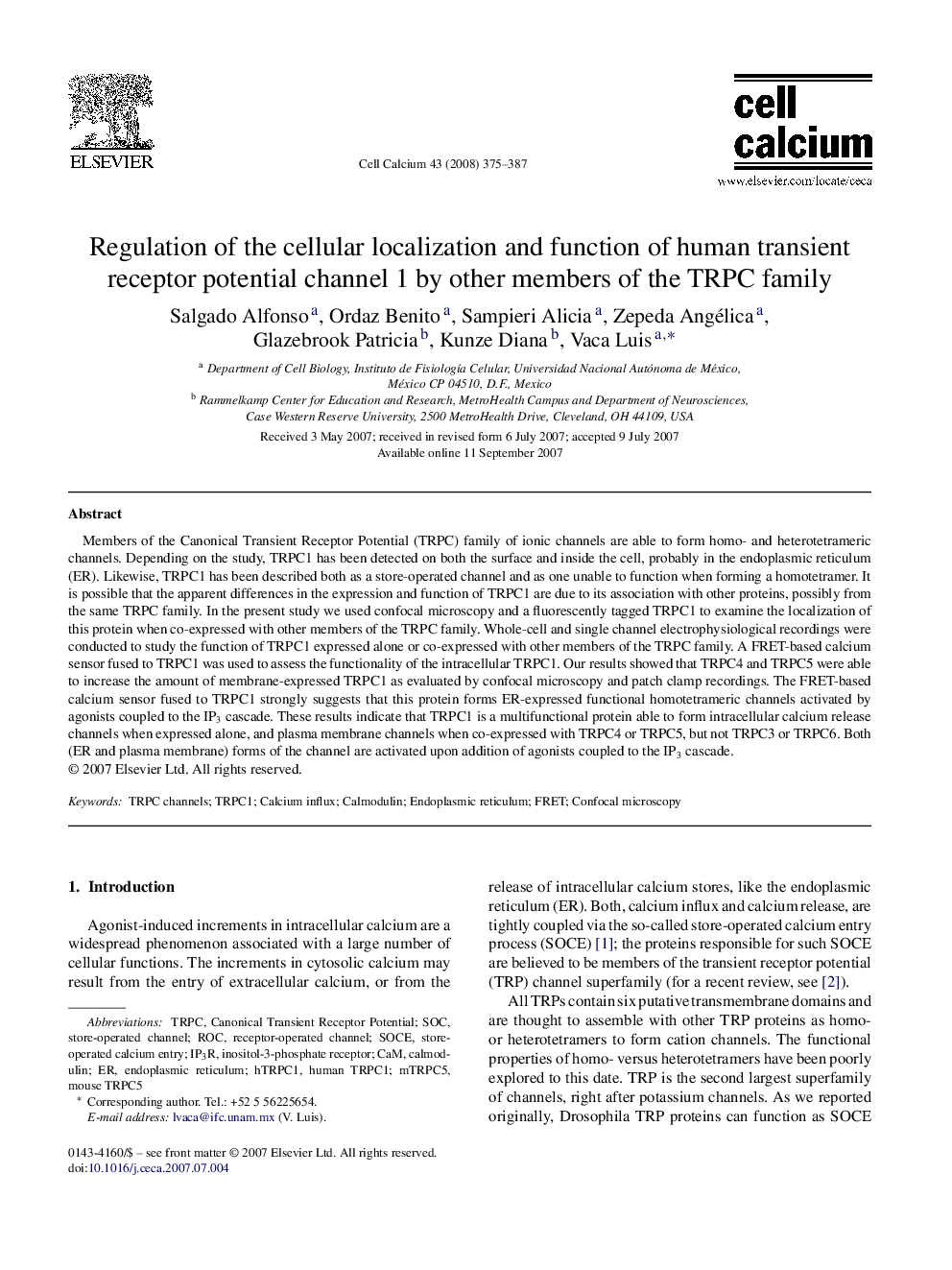| Article ID | Journal | Published Year | Pages | File Type |
|---|---|---|---|---|
| 2166672 | Cell Calcium | 2008 | 13 Pages |
Members of the Canonical Transient Receptor Potential (TRPC) family of ionic channels are able to form homo- and heterotetrameric channels. Depending on the study, TRPC1 has been detected on both the surface and inside the cell, probably in the endoplasmic reticulum (ER). Likewise, TRPC1 has been described both as a store-operated channel and as one unable to function when forming a homotetramer. It is possible that the apparent differences in the expression and function of TRPC1 are due to its association with other proteins, possibly from the same TRPC family. In the present study we used confocal microscopy and a fluorescently tagged TRPC1 to examine the localization of this protein when co-expressed with other members of the TRPC family. Whole-cell and single channel electrophysiological recordings were conducted to study the function of TRPC1 expressed alone or co-expressed with other members of the TRPC family. A FRET-based calcium sensor fused to TRPC1 was used to assess the functionality of the intracellular TRPC1. Our results showed that TRPC4 and TRPC5 were able to increase the amount of membrane-expressed TRPC1 as evaluated by confocal microscopy and patch clamp recordings. The FRET-based calcium sensor fused to TRPC1 strongly suggests that this protein forms ER-expressed functional homotetrameric channels activated by agonists coupled to the IP3 cascade. These results indicate that TRPC1 is a multifunctional protein able to form intracellular calcium release channels when expressed alone, and plasma membrane channels when co-expressed with TRPC4 or TRPC5, but not TRPC3 or TRPC6. Both (ER and plasma membrane) forms of the channel are activated upon addition of agonists coupled to the IP3 cascade.
